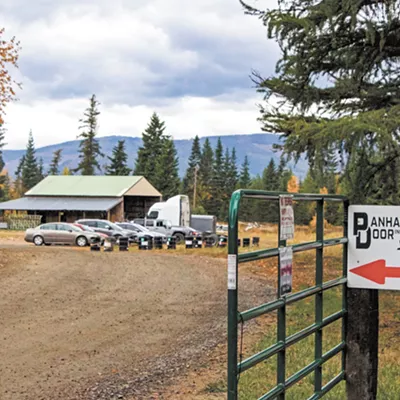
By the time the Cuyahoga River caught on fire in 1969, sending plumes of smoke into the air that captured national attention, the Cleveland-area waterbody had already been ablaze a dozen times over the years.
For many, the fire was a visual symbol of the consequences of widespread dumping of industrial pollution, sewage and garbage into freshwater sources with little concern for the future.
Congress agreed something needed to change. The next year, lawmakers created the Environmental Protection Agency (EPA) and passed federal regulations on pollution, requiring permits for projects with significant impacts nationwide. Soon after, the Clean Water Act was passed to restore and protect the nation's waters, calling for the removal of toxins and prevention of further pollution across the country.
For decades, states worked with federal regulators at the EPA and the U.S. Army Corps of Engineers, using guidance from the Clean Water Act to mitigate and permit projects that could impact "Waters of the United States" or WOTUS.
Developers and others regularly challenged which waters were really covered under the act, but courts upheld that the act covered even small contributors to watersheds, such as irrigation ditches, small wetlands and temporary streams.
In 2015, President Obama's EPA cemented decades of permitting practice and court rulings, clarifying that various wetlands and ephemeral or temporary streams are covered by the law, as they "are chemically, physically, and biologically connected to downstream waters" and influence their integrity.
Now, President Trump's EPA has proposed rolling back that clarification, meaning much of the country's wetlands and streams could lose federal protection. The Trump administration argues that wetlands and water bodies that don't touch navigable rivers or lakes were never meant to be protected by the Clean Water Act, but rather left to states to deal with as they see fit.
"For the first time, we are clearly defining the difference between federally protected waterways and state-protected waterways," said then-acting EPA Administrator Andrew Wheeler when he announced the proposal at a press conference in December.
But state regulators and nonprofits that work to protect clean water say that rolling back the protections on the national level could actually create an unnecessary and costly mishmash of regulations in every state in the country.
"It creates this really strange patchwork," says Curt Hart, a spokesman for the state Department of Ecology's Shorelands and Environmental Assistance program. "Right now we're pretty clear: all the waters in the state of Washington are protected under state law and federal law. If you make that patchwork more difficult, it makes it more difficult to know what is and isn't protected."
Currently, the state uses its authority to regulate waters under the federal act, and works with the Army Corps to agree on the terms of permits that impact waters throughout the state. If that were to go away for many water bodies, Hart notes that Washington does not have its own regulatory program ready to go. To create one would take time and money.
"Washington does not have a permitting process for wetland impacts," Hart says. "One would have to be established, and that could result in delays to projects and economic losses to Washington communities."
It's hard to say just how much of Washington's water would lose federal protection under the rule, as Ecology doesn't have an inventory, Hart says.
But some of the waters that could be impacted include irrigation ditches and canals, streams that only appear when it rains, wetlands behind dikes that don't connect with a river on the surface and wetlands that are close to the ocean but don't touch marine waters, Hart says.
"In Thurston County alone, there could be at least 2,000 acres of wetlands that could lose federal protections," Hart says.
It could also get very confusing as to who exactly has jurisdiction where, Hart says. For example, if a stream is protected under state law, but no longer under federal law, and something pollutes the surface waters and flows downstream to a reach of the waterbody that is federally protected, who is supposed to manage that?
"We are concerned about that rule," Hart says. "We think that as written, and if it were put into place, it would diminish classes of wetlands and streams that are highly valued by Washington residents."
Spokane Riverkeeper Jerry White says he also doesn't want to see any water in the state lose the same federal protections that allowed citizens to sue and regulate the stormwater and sewer system that dumps into the Spokane River.
"The reason we have rivers that are really cleaned up, and fishable, and swimmable, are because of the provisions that are in the federal jurisdiction of the Clean Water Act," White says. "We don't want to see those same gold standard protections lost for other water bodies in some way."
Final changes to the Clean Water Act will be developed now, with consideration given to public comments that were accepted through April 15.
At the same time interested groups were finalizing their comments on the proposed Clean Water Act changes, they were hit with news of two other potentially major changes to water regulations.
On April 8, apparently by mistake, an EPA memo was posted to regulations.gov supposedly opening a 30-day comment period on the agency's intent to roll back parts of Washington state's Clean Water Rule. The 2016 rule, which the state is still working to implement, regulates pollutants that are discharged by city wastewater treatment plants and other polluters based on what is considered safe for people to eat when those pollutants get into fish.
No notice was given to Ecology, regional tribes or other interested parties, who quickly responded.
"I'm shocked EPA did not engage with Washington before moving to change the clean water rule. This is a blatant violation of the principles of cooperative federalism and states' rights," Ecology Director Maia Bellon said in a news release. "I am also very concerned EPA failed to consult with Washington's federally recognized tribes, disregarding federal trust and treaty obligations."
In part, the Clean Water Rule sets limits for polychlorinated biphenyls or PCBs, toxic legacy pollutants that have significantly impacted the Spokane River, and which have been the focus of years of work for the Spokane Riverkeeper, city and regional agencies and polluters.
"This rule was really a step forward in ensuring not just the public but tribal communities were protected," White says. "We're profoundly disappointed that a rule that was designed to protect the public is now up for rescission."
Soon after the outcry from involved agencies, EPA added a memo to the file saying the first was posted erroneously, and noting the agency "has not published any documents for public comment and the docket should not have been opened on April 8, 2019."
But it seems clear to White and lawyers that work with Washington Waterkeepers that this is not a question of if something will happen, but when.
Adding to the list, on April 10 President Donald Trump signed two executive orders meant to make it easier to permit and build energy projects around the country. One of those orders would require the EPA to review states' authority under the Clean Water Act to regulate things like pipelines or coal terminals that could impact waters in their state.
Gov. Jay Inslee immediately said he and state Attorney General Bob Ferguson would challenge the order in court if necessary.
"No amount of politicking will change the facts — states have full authority under the Clean Water Act to protect our waters and ensure the health and safety of our people," Inslee announced. "Washington will not allow this or any presidential administration to block us from exercising our authority lawfully and effectively."
The onslaught of proposed changes to water protections have groups like the Spokane Riverkeeper and others that work to combat pollution working night and day to stay caught up on everything that's happening in a "multipronged assault on all of it," White says.
"It's got us all tasked out, running around, and in a sense, that's kind of a tactic that this administration has used," White says, "which is to burn up the bandwidth of those organizations that are charged with protecting water health and water quality so then the attack can happen on other fronts." ♦
























